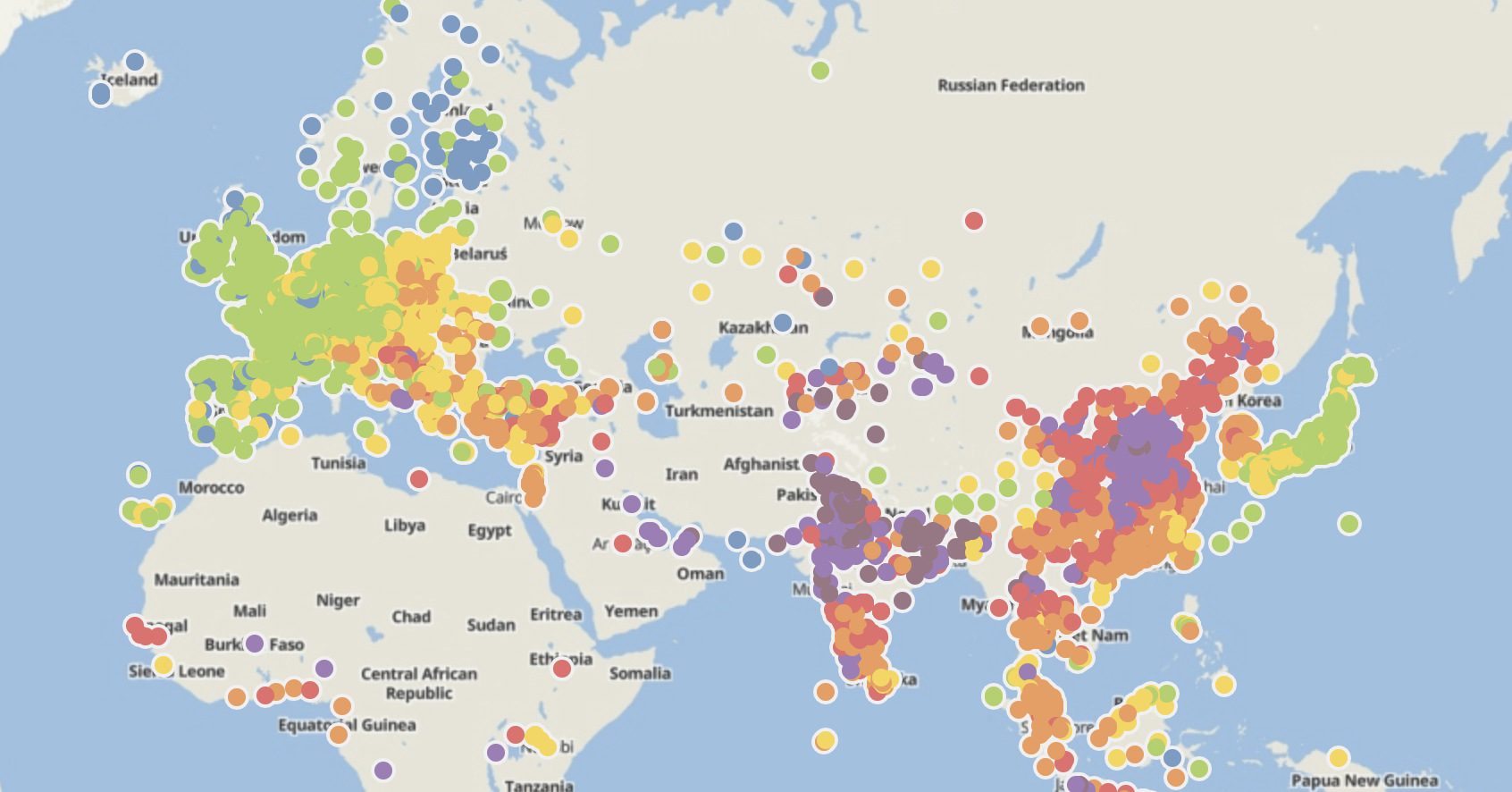About this report
The 2023 World Air Quality Report provides a global review of air quality data for the year 2023. The report summarizes PM2.5 air quality data from 7,812 cities spanning 134 countries, regions, and territories. The data utilized to create this report was aggregated from more than 30,000 air quality monitoring stations operated by research institutions, governmental bodies, universities and educational facilities, non-profit organizations, private companies, and citizen scientists.
PM2.5 data is reported in units of micrograms per cubic meter (μg/m3) and incorporates the latest World Health Organization (WHO) annual PM2.5 guideline and interim targets for data visualization and risk communication (released in 2021).
The 2023 World Air Quality Report was created from real-time air quality data sourced from IQAir’s global air quality monitoring platform that vets incoming data with validation and calibration protocols to harmonize air quality data from monitoring stations around the world.
Historic air quality data utilized in the creation of this report can be found on the IQAir website, an interactive map featuring annual city concentrations, global city-level rankings and links to the more than 7,000 dedicated city pages providing local real-time air quality data and information.
IQAir strives to actively involve, educate, and motivate governments, educators, researchers, non-profit organizations, corporations, and individuals to foster collaborative endeavors aimed at enhancing public awareness of air quality. IQAir seeks to facilitate well-informed discussions and inspire initiatives that advance air quality and promote the well-being of communities and cities worldwide.
Executive Summary
Causing an estimated one in every nine deaths worldwide, air pollution is the greatest environmental threat to human health. According to the World Health Organization (WHO), air pollution is responsible for an estimated seven million premature deaths worldwide every year.1
Exposure to PM2.5 air pollution leads to and exacerbates numerous health conditions, including but not limited to asthma, cancer, stroke, and lung disease.2 Additionally, exposure to elevated levels of fine particles can impair cognitive development in children, lead to mental health issues, and complicate existing illnesses including diabetes.
The data utilized to create this report was aggregated from the global distribution of more than 30,000 regulatory air quality monitoring stations and low-cost air quality sensors operated by research institutions, governmental bodies, universities and educational facilities, non-profit non-governmental organizations, private companies, and citizen scientists.
The 2022 World Air Quality Report included data from 7,323 locations in 131 countries, regions, and territories. In 2023, those numbers have grown to include 7,812 locations in 134 countries, regions, and territories. Coverage in Africa has expanded significantly in 2023 with seven new countries being added to the region. Coverage has also expanded across Latin America with four additional countries included in 2023. The African nations of Chad and Sudan, as well as the West Asian country of Iran, are notably absent in 2023 due to a lack of publicly available monitoring data.
In 2023, 10 out of the reporting 134 countries and regions succeeded in achieving the WHO annual PM2.5 guideline value of 5 μg/m3. With only 9% of globally reporting cities achieving the WHO annual PM2.5 guideline, much more work remains to be done to combat air pollution. While PM2.5 poses direct health risks, its implications extend beyond human health to complex environmental processes impacted by the Earth’s climate. Climate change, primarily driven by greenhouse gas emissions, plays a pivotal role in influencing concentrations of PM2.5 air pollutants, and fossil fuel emissions are simultaneously responsible for the majority of PM2.5 related deaths.3 Simultaneously addressing air pollution and climate change goals is feasible, offering opportunities for comprehensive environmental improvements.
References
[1] UN Environment Programme. Pollution action note – Data you need to know. Published September 7, 2021. https://www.unep.org/interactives/air-pollution-note/
[2] Zehnder C, Manoylov K, Mutiti S, et al. Introduction to environmental science: 2nd edition. Biological Sciences Open Textbooks. Published 2018. https://oer.galileo.usg.edu/biology-textbooks/4
[3] Vohra K, Vodnos A, Schwartz J, Marais EA, Sulprizio MP, Mickley LJ. Global mortality from outdoor fine particle pollution generated by fossil fuel combustion: Results from GEOSChem. Environmental Research. 2021;195(0013-9351) doi: 10.1016/j.envres.2021.110754 https://www.sciencedirect.com/science/article/abs/pii/S0013935121000487

